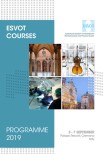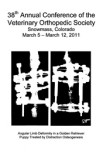Introduction: Ethylene oxide is currently recommended for sterilization of antibiotic impregnated beads; however this method carries health risks to personnel and is becoming less available. Objective: To perform a pilot study of the effect of radiation for sterilization of polymethylmethacrylate (PMMA) and plaster of Paris (POP) beads impregnated with amikacin, enrofloxacin, and ceftiofur. Hypothesis: Radiation would effectively sterilize the beads without affecting the efficacy of the antibiotic. Materials and methods: Beads of PMMA and POP were prepared in a clean but non-sterile manner with one of the three antibiotics (amikacin, enrofloxacin, ceftiofur) or no antibiotic. Beads were then exposed to radiation for a total dose of 0 kiloGray (kGy), 10 kGy and 25 kGy. Beads were incubated on Mueller-Hinton agar plates seeded with Escherichia coli, Staphylococcus aureus or Pseudomonas aeruginosa for 24 hours or cultured in brain-heart infusion broth for 48 hours. Zones of inhibition were measured on the agar plates and statistics were performed on the diameters of the zones of inhibition using an analysis of variance. Results: There were no differences in the diameters of inhibition for all levels of radiation for all PMMA beads. The same was true with POP beads with the exception of enrofloxacin which had a significantly decreased zone of inhibition with increased levels of radiation, though the clinical significance of this finding was not assessed. Only beads without antibiotics and not exposed to radiation had bacterial growth. Clinical significance: Radiation may be an effective method of sterilization for antibiotic impregnated beads.
Sterilization by gamma radiation of antibiotic impregnated polymethylmethacrylate and plaster of Paris beads
Date
2014
Journal
Veterinary and Comparative Orthopaedics and Traumatology
Volume
27
Number
2
Pages
97-101









